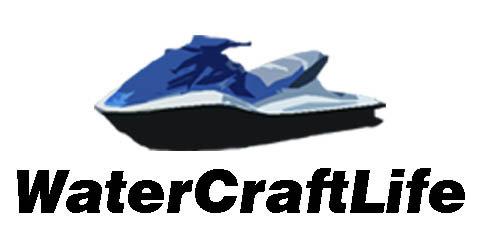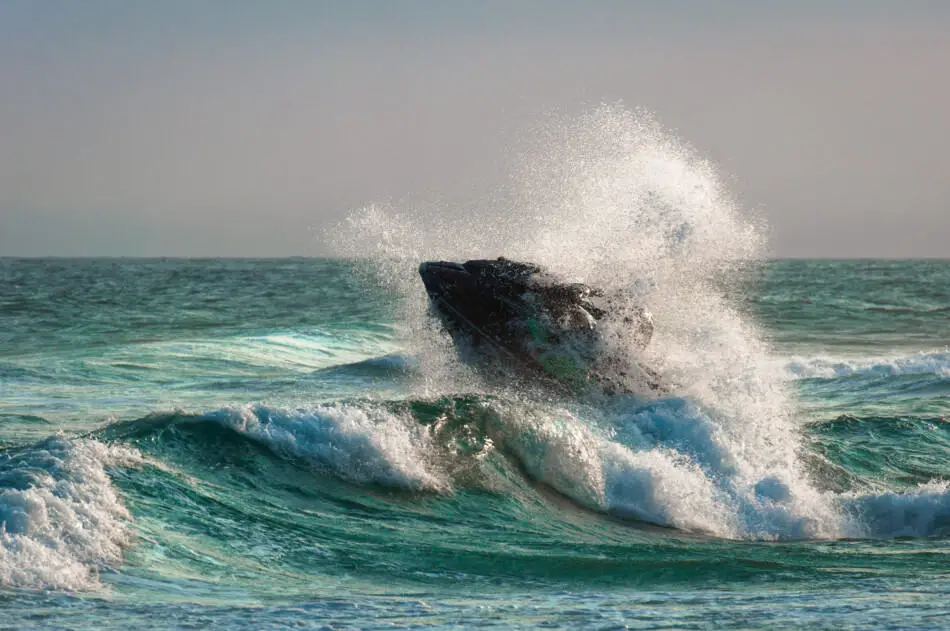Jet skis, also known as personal watercraft, or PWC, are a popular way for recreation-seekers, weekend warriors, and beach house adrenaline chasers to get out on the water and enjoy some speed and agility without having to purchase an expensive leisure vessel or speed boat. Jet skis are portable, being able to be towed up to three or four at a time by even modest sedans, and are incredibly fast and fun.
The problem is that even though they are fast and agile, they are easy to capsize because of their inherent top-heaviness. They can capsize due to a failed attempt at a trick or stunt, or simply because of operator inexperience on a narrow ski going slow. Either way, once they flip, water has a chance of entering the engine. That’s when trouble and expensive repairs can happen.
Does flipping a jet ski damage it?
Flipping a jet ski typically doesn’t do any physical damage, where the damage can occur is if you flip the jet ski back over and manage to get water within the intake. This can hydrolock the engine leaving you stranded on the water possibly doing permanent damage.
How Can Flipping a Jet Ski Cause Damage?
When you ride a jet ski, most of the time you get water in the hull. This just happens as you are riding a craft on the water with air intakes to the engine bay.
If you were to flip the jet ski, water rushes in the hull while it is waiting to be turned back over. There is a right way and a wrong way to flip the jet ski back over rightsize. If you flip it the right way, you will be fine, the wrong way, and you will send water rushing into your intake system or carburetors which can cause your engine to hydrolock and leave you stranded.
Typically jet skis have a picture on the back of the ski illustrating the correct way to flip your craft. If not, check your owners manual.
When the engine runs or is cranked and the intake got water in it, it creates suction that can pull water into the engine. Normally the engine will stop before damage occurs, but forcing the starter on the engine to cycle could cause irreparable damage.
Once water is in the engine in any capacity you need to get it out of there as quickly as possible. Leaving water in the engine for any length of time can lead to severe and costly damage, including engine replacement. Leaving water in there for even the span of a few hours can lead to the piston rings seizing to the cylinder wall, the crank and bearings to rust, and for the engine to seize beyond repair.
Even if there appears to be other damage, for instance, if your jet ski was flipped during a collision or accident, it is imperitive that you get it correctly and safely flipped right side up, and get to shore to begin getting the water out of the engine.
Water In The Cylinders on your PWC
This is the more common outcome of doing an uncontrolled or improper flip of the jet ski while it is running. The intake becomes submerged and it pulls water into the engine, generally stopping it very quickly by simply preventing ignition.
This condition can be diagnosed by trying to start the jet ski once it has been properly flipped over in the water and being unable to start. If suspected, it can be confirmed by pulling a spark plug and checking for moisture.
This is the more common outcome of doing an uncontrolled or improper flip of the jet ski while it is running. The intake becomes submerged and it pulls water into the engine, generally stopping it very quickly by simply preventing ignition.
This condition can be diagnosed by trying to start the jet ski once it has been properly flipped over in the water and being unable to start. If suspected, it can be confirmed by pulling a spark plug and checking for moisture.
Even as this is the least severe of the outcomes of flipping your jet ski, this is still a serious situation that requires you to take immediate action or risk irreparable damage to the engine of your jet ski. Do not think that just because it isn’t locked that you can delay in removing the water from the engine components.
Hydrolock on your PWC
A hydraulic lock or hydrolock is a dangerous and often costly condition that can happen if the engine is forced to cycle while water is in the intake. This will eventually fill a cylinder with water, which is nearly incompressible, and cause the engine to stop if you’re lucky, or cause catastrophic mechanical failure of some sort if you aren’t. The damages caused by a forced hydrolock can mean a costly engine rebuild, and possible replacement of components on the valve train or attached to the crankshaft.
To avoid hydrolock, if your jet ski or personal watercraft has been flipped or sunk and still has not died, shut it off immediately. This will help prevent sucking water in and trying to pressurize it in the cylinder. If the engine does become hydrolocked, it may still be undamaged, but you will need to remove the water from the crankcase and cylinders before knowing for sure.
How Can I Avoid Damaging My Jet Ski During A Flip?
As a requirement of safety labeling on jet skis and other personal watercraft, there will be a sticker located on the stern of the vessel, near the exhaust that will detail the proper direction and procedure for flipping it back over correctly. This sticker will show how to orient yourself in relation to the rear of the jet ski, where your handhold is and where to brace with your foot, and which direction you will need to roll the jet ski to avoid
It Flipped The Wrong Way, What Do I Do To Minimize Damage To My Jet Ski Engine?
This is the easy one to fix, many people being able to fix this without needing to call it a day. If you have flipped and your engine will not start, but you are now out of the water, follow these steps to get running again:
- Get your jet ski to shore. If being towed, keep it at 5mph or less to avoid making things worse.
- Pull the plugs. Set safely aside.
- Ground the plug wires. This helps avoid igniting any fumes. There is often a grounding or testing lug nearby that you can attach the plug wire to for this and similar purposes.
- Crank the engine. This will force any water in the cylinders out. Do not keep cranking the engine as this can also damage it. Force the water out, then stop.
- Clean and dry the plugs, put a small amount of fuel in the cylinder, reinstall the plugs.
- Crank again to try and start. If it starts but stalls, pull the plugs and dry them again. You may need to do this a few times, or use starting fluid to displace the remaining moisture. If it starts and runs, let it idle for a couple of minutes and put her on the water. Run for 5 to 10 minutes and everything should be good!

